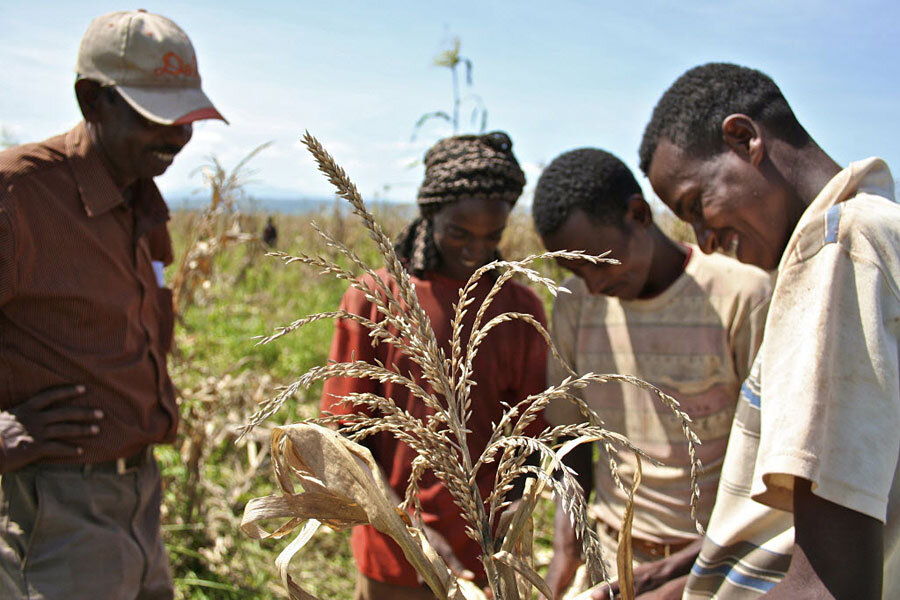How three teens used bacteria to tackle global food poverty
Loading...
How many teenage girls do you know who are trying to come up with agricultural solutions for communities 4,000 miles away from their hometown?
Ciara Judge, Emer Hickey, and Sophie Healy-Thow, high-schoolers from County Cork, Ireland discovered a bacterial treatment for cereal crop seeds that could potentially increase yields in areas stricken by famine.
The three were named the winners of Google's annual global science fair for teens after they spent eleven months treating cereal crop seeds with a natural bacteria and waiting for them to grow. It turned out the team didn't have to wait very long. The bacteria helped the seeds to germinate much faster than usual and the girls are now looking to apply their method in famine-prone areas.
The girls plunged into the project after Emer's mother discovered nodules on the roots of her pea plants while gardening. Curiosity led them to the classroom, where a teacher informed them about Diazotroph bacteria, which helps convert atmospheric nitrogen into a more usable form. Legumes like the pea plant in Emer's backyard are known to have a beneficial relationship with one kind of Diazotroph bacteria known as rhizobia.
Having learned about the global food poverty crisis, the girls wondered if they could use rhyzobia to spur growth in cereal grains because of the increasing demand for this type of crop in the developing world.
Ciara, Emer, and Sophie completed more than 100 experimental runs in their backyard garden laboratory and inoculated thousands of seed samples with a diluted syrup of rhyzobia. They found that, even in non-legume plants, this naturally-occurring bacteria accelerated crop germination by up to 50 percent. And there are big benefits to completing the germination stage more quickly.
When seeds experience a longer germination period, they are more vulnerable to the menacing bird or slug. A quick germination, then, means a higher likelihood of survival and more time for growth, John Spink, head of crop science at Teagasc, Ireland's Agriculture and Food Development Authority, tells the Monitor.
Dr. Spink has spent the last four years working on a research project investigating how to increase yields of spring barley, the predominant crop in Ireland. He says that those few extra days can be quite significant, especially for a grain like barley, because of its relatively short life cycle.
"An extra five days of growth during the grain filling period can produce an extra half ton (23 bushels) per acre," says Spink.
The trio visited Teagasc and spoke with Spink and his colleagues about the possible ways their research could be applied to crop production of barley and other cereals abroad. The young scientists carried out their experiments in Ireland's moist, temperate climate, but their method should work just as well in other climates to extend growing seasons for cereal crops, according to Spink.
"In big agricultural areas where you're relatively short of moisture when you grow the crop," says Spink, "if you have a root system that's already exploring the soil, it's much more resilient to transient drought than during its germination phase."
The symbiotic relationship that exists between rhyzobia and legumes is one that, for some time, scientists have been trying to replicate for cereal crops. In the girls' at-home experiments, the bacteria didn't work exactly the same way that rhyzobia works in legume plants like peas and beans.
"I believe what they found is a different relationship," says Spink, "But one that still resulted in a beneficial effect."
Spink said that he and his colleagues hadn't studied the bacteria that the girls discovered in Emer’s backyard.
"It was the fact that they looked at this bacteria, seeing that it was doing something to the seeds as they germinated and it was having a big impact on germination and growth of the crop," says Spink. "That we would say 'Well, hey, that's actually quite relevant'."








